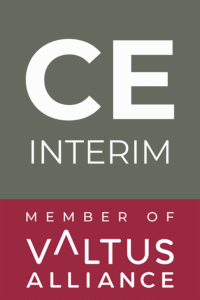Not enough time to read the full article? Listen to the summary in 2 minutes.
Reshoring is on the rise as manufacturing companies are bringing production back to their homelands. This shift is driven by factors like increasing labor costs in developing nations and geopolitical tensions disrupting supply chains. While offshoring was popular in the late 1970s due to lower costs, today’s consumers prioritize quality and origin over price, making reshoring an attractive option.
Reshoring offers benefits like improved quality control, faster response to customers, and a boost to the local economy. But it also comes with challenges and risks.
This blog post will explore what reshoring entails, the opportunities it presents, and the potential pitfalls to consider.
What Does Reshoring Mean?
Reshoring is re-establishing any company’s manufacturing and production systems from foreign facilities to its home country. This particular process is also often referred to as onshoring, inshoring, or backshoring. The process is exactly the opposite of offshoring, in which case, the factory in discussion is relocated to a different location outside the home country.
Bringing manufacturing operations back home improves efficiency by getting closer to consumers.. In the process, it also helps reduce the total cost of production. On a broader front, reshoring contributes to the strengthening of the domestic economy by generating new job opportunities.
Key Benefits of Reshoring Manufacturing Plant
Manufacturing plant relocation to the company’s homeland comes with a plethora of advantages and opportunities. Let’s explore the major benefits of reshoring:
Higher Cost Savings
Reshoring aids companies in achieving higher cost savings. This is made possible, thanks to the reduction of transportation costs due to closer proximity to the market and consumers. Reshoring also allows manufacturing companies to get rid of costs associated with certain international tariffs, trade barriers, and non-compliance issues. Companies benefit from sourcing materials locally for quicker production, enhanced efficiency, improved quality, and reduced costs.
Superior Quality Control
One of the most prominent advantages of reshoring is the superior quality control that it enables, allowing companies to oversee and command production processes more effectively. Bringing production back home gives businesses more control and visibility over manufacturing steps. This ensures that quality standards are consistently met or exceeded. Such close proximity also facilitates immediate identification and resolution of any arising issues, thus reducing the risk of defects and enhancing overall product reliability. Reshoring also fosters closer collaboration between production and R&D teams, enabling them to work in tandem and accelerate innovation. This leads to the rapid development of new products and improvements to existing ones, thus competitive advantage.
Improved Supply Chain Resilience
Relocating manufacturing plants to the home country significantly enhances supply chain resilience by mitigating the risks associated with long and complex international supply chains. That means reduced vulnerability to shipping delays, high lead times, shortages, and frequent disruptions. Domestic production minimizes reliance on foreign suppliers, ensuring stable material and product supply.
The closer proximity to the market allows businesses to respond swiftly to changes in market dynamics and customer demands, leading to greater flexibility and agility.
More importantly, the reduced distance between production and consumers shortens lead times and improves the ability to scale operations up or down based on real-time demand, hence enhancing the overall supply chain efficiency and responsiveness.
Economic & Social Advantages
Relocating factories to the home country helps create high-quality employment opportunities, which stimulates the local economy and contributes to GDP growth.
Investing in local production supports communities, reduces unemployment, and promotes economic stability.
Reshoring manufacturing operations essentially not only drives economic benefits but also helps companies align with social and ethical values, strengthening their brand perception and standing in the market.
Risks and Challenges of Reshoring Production
Alongside plentiful benefits, reshoring production also presents certain risks and challenges that require prompt handling. If they are ignored, the decision to manufacturing plant relocation to a company’s homeland can be catastrophic for its manufacturing operations. Let’s understand the risks and challenges associated with factory reshoring:
Escalation of Labor Costs
Even amid the recent rise in labor costs in developing nations, the average wages there are still lower than in developed ones. Not all countries support favorable relocation opportunities. If your company is in Germany, France, the UK, or the U.S., reshoring could harm financially. This is mainly because the labor costs in these countries will be significantly higher than in offshore locations. Another critical challenge with this business decision is dealing with complex labor laws and workforce unions. Consider relocating your factory closer to key markets in Eastern Europe or the Balkans for skilled workforce and cost efficiency.
High Initial Capital Investment
Reshoring requires a significant capital investment for new or updated manufacturing facilities, infrastructure, and technical advancements. Operational expenses such as real estate, utilities, and others are comparatively higher in developed nations than in prime offshoring locations. Consult experts for cost-effective, efficient planning at your new factory location from day one.
Disruption of Production
Manufacturing plant relocation is a time-consuming process that may cause potential disruptions during the transition period. Furthermore, your employees would require additional time to adapt to new processes, systems, and locations, contributing to more downtime. To mitigate this risk, you can get help from an expert interim manager for factory relocation. Thanks to the immense experience and proven expertise they have, these managers can help avoid production disruptions, reduce downtime, and ensure a seamless transition.
Dealing with Regulations & Compliances
When reshoring production to the home country, you will have to deal with local environment, health, and safety regulations, which are usually more stringent than offshoring locations. Your company will also require necessary permits and licenses to operate unimpeded. If you are unfamiliar with the legal requirements of your newly selected factory location, you will encounter some significant hassles. It’s always a better decision to talk with experts who deal with manufacturing plant relocation in that particular geographic location.
How to Evaluate Reshoring Opportunities?
A thorough analysis is required to evaluate if reshoring the manufacturing plant is the right call for your company. You must look through certain factors, compare the high initial investment against long-term benefits, and make a decision that satisfies stakeholders and employees.
To help you begin, we have listed some major factors to consider before deciding whether to opt for reshoring your manufacturing production.
- Analyze Cost Benefits: Compare the cost and benefits of reshoring against existing offshored operations. Follow it up with an estimation of return on investment for reshoring.
- Check For Strategic Compatibility: Evaluate if reshoring aligns with the company’s strategic objectives and ensures long-term sustainability. For that, you can assess fundamental factors like access to the market, expansion opportunities, and consumer behavior.
- Evaluate the Supply Chain: Research the impact of reshoring on supply chain efficiency and responsiveness. Develop a plan for how reshoring can mitigate risks involved with your supply chain management.
- Assess the General Impact: Predict and analyze the impact of reshoring on current employees, and workforce management and planning. Additionally, understand the impact of this move on the local community. Additionally, look for potential government incentives and subsidies.
3 Steps Involved in Successful Manufacturing Plant Reshoring
Production reshoring is a complex procedure that involves several key steps. Neglecting any of these phases will adversely impact your manufacturing operations, leading to dissatisfaction among stakeholders, employees, and customers. Here we have discussed the three major steps involved in a successful manufacturing plant reshoring process:
Initial Plan Development
The procedure begins with the strategizing phase. You must conduct a thorough analysis of potential benefits and risks, finalize the decision, choose the site, and develop a clear transition plan. It must include well-defined goals and objectives, budget estimation and allocation, and timelines and milestones. Involve key stakeholders at this stage, form a team to help with reshoring, and follow an effective communication strategy for sheer transparency.
Execution: Transition & Setup
After completing the planning phase, it’s time to meticulously execute the plan for a successful transition, followed by setting up and installing at the new location. Incorporate advanced manufacturing technology upgrades and automation at this step but don’t forget to train your employees about it.
Review, Monitor, and Optimize
This is the action-oriented phase where you must thoroughly review if the transition went as planned. You can collect feedback from your employees and stakeholders to identify any areas for improvement. Consistent monitoring and necessary optimizations will increase the efficiency of your manufacturing operations, leading to higher profits.
Final Word
If you’re planning manufacturing plant relocation to the homeland, you must consider all factors involved before finalizing the decision. Given the daunting process, it may seem overwhelming at times. After all, you have a business to run. If you tire yourself trying to handle every aspect of your operations, it is your bottom line that will be going to suffer. That’s why we recommend that you seek professional assistance from expert interim managers. They are the best people to guide you with proper planning, location analysis, seamless transition, workforce onboarding, and process optimization. They utilize a dedicated factory relocation checklist that ensures a successful transition. Plant relocation can be complex but interim management companies simplify the process.
When it comes to expert interim management solutions, CE Interim stands out as the premier choice. Our seasoned interim managers specialize in facilitating seamless transitions and optimizing operational efficiency, from strategic planning through execution.
Discover how our tailored cross-cultural interim management solutions can empower your business during the relocation process. Fill out our Contact Form, and our representatives will promptly reach out to discuss your specific factory relocation needs. Let CE Interim help you unlock new growth opportunities and achieve a smooth, successful transition.





